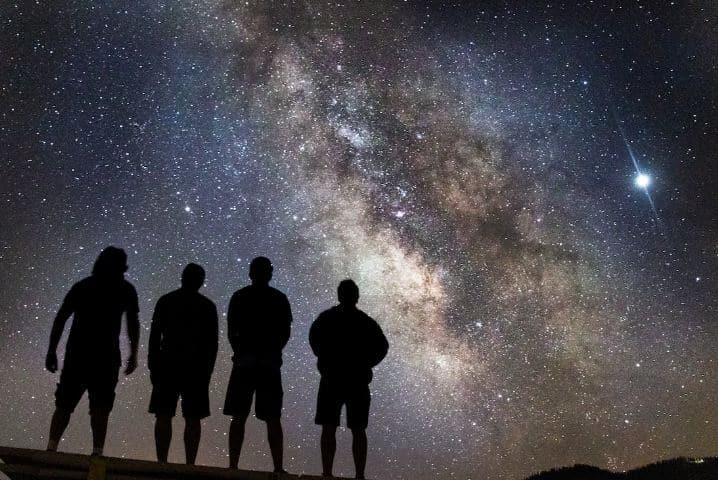Orion Stars: Unraveling the Cosmic Tapestry of History, Mythology, and Brilliance

In the vast expanse of the night sky, few constellations captivate the human imagination as profoundly as Orion Stars. A celestial masterpiece, Orion and its stars have not only been guiding lights for navigators throughout history but have also woven a rich tapestry of mythology that spans cultures across the globe. In this article, we delve into the history, mythology, significance, and the brilliance of the stars that make up the awe-inspiring constellation of Orion.
Orion Stars: A Glimpse into History and Mythology
Orion Stars History
Orion, named after a legendary hunter in Greek mythology, is one of the most recognizable constellations in the night sky. Its prominence and visibility have made it a significant point of reference for astronomers and stargazers since ancient times.
Orion Stars Mythology
The myth of Orion varies across cultures, but the Greek mythology is perhaps the most well-known. In Greek lore, Orion was a giant and skilled hunter. His love affair with the goddess Artemis led to his tragic demise, as he was stung by a giant scorpion sent by Apollo. The gods placed both Orion and the scorpion in the night sky, creating the constellations Orion and Scorpius.
Why is Orion So Special?
Orion stands out for its striking appearance and easy identification in the night sky. It is visible from both hemispheres and is particularly prominent during the winter months. Its distinctive “belt” of three bright stars, aligned in almost perfect symmetry, makes Orion easily identifiable even in areas with significant light pollution.
Orion Stars Characteristics
| Star | Spectral Type | Apparent Magnitude | Distance (light-years) | Characteristics |
|---|---|---|---|---|
| Betelgeuse | M-type Supergiant | 0.3 to 1.2 | ~642.5 | Red supergiant, variable star, one of the brightest in Orion |
| Rigel | B-type Supergiant | 0.05 to 0.18 | ~860 | Blue supergiant, one of the most luminous stars in the sky |
| Bellatrix | B-type Giant | 1.59 | ~243 | Blue-white giant, part of Orion’s shoulder |
| Saiph | B-type Supergiant | 2.06 | ~720 | Blue supergiant, marks Orion’s right knee |
| Mintaka (Delta Ori) | Multiple (O+B) | 2.41 | ~1,200 | Binary system, part of Orion’s Belt |
| Star | Role in Navigation |
|---|---|
| Mintaka (Delta Ori) | Part of Orion’s Belt; used for celestial navigation |
| Alnitak | Part of Orion’s Belt; used for celestial navigation |
| Betelgeuse | Used as a reference point in celestial navigation |
| Rigel | Used as a reference point in celestial navigation |
| Saiph | Helpful for locating other stars in the Orion constellation |
| Bellatrix | Aids in identifying Orion’s shoulder in the night sky |
Stars in Orion
Orion consists of several notable stars, each contributing to its unique charm. The most prominent stars include:
Betelgeuse (α Orionis)
A red supergiant, Betelgeuse is one of the brightest stars in Orion and marks the hunter’s left shoulder.
Rigel (β Orionis)
A blue-white supergiant, Rigel is located at Orion’s right foot and is the brightest star in the constellation.
Bellatrix (γ Orionis)
Also known as the “Amazon Star,” Bellatrix marks Orion’s left shoulder.
Mintaka (δ Orionis)
The third star in Orion’s belt, Mintaka is a double star system.
The Myth of Orion
Beyond Greek mythology, Orion is a prominent figure in various cultures. In Egyptian mythology, it is associated with Osiris, the god of the afterlife. In indigenous Australian astronomy, Orion’s Belt is known as the “Three Brothers” or the “Three Kings.”
Is Orion in Our Milky Way?
Yes, Orion is part of our Milky Way galaxy. It is located in the Milky Way’s Orion Arm, a spiral arm that extends outward from the galactic center.
8 Brightest Stars of Orion
| Star | Magnitude | Type | Distance (light-years) |
|---|---|---|---|
| Betelgeuse | 0.5 | Red Supergiant | 642 |
| Rigel | 0.18 | Blue-White Supergiant | 860 |
| Bellatrix | 1.64 | Blue-White Giant | 243 |
| Mintaka | 2.23 | Multiple Star System | 1,200 |
| Saiph | 2.07 | Blue Supergiant | 720 |
| Meissa | 3.39 | Multiple Star System | 1,100 |
| Alnilam | 1.70 | Blue Supergiant | 1,340 |
| Betelgeuse | 0.5 | Red Supergiant | 642 |
Conclusion
Orion Stars, with its mesmerizing stars and enthralling mythology, continues to be a beacon in the night sky, connecting us to the wonders of the cosmos and the stories passed down through generations. Whether studied for scientific exploration or admired for its cultural significance, Orion Stars stands as a testament to the enduring fascination humans have with the celestial realm. The next time you gaze up at the night sky, look for Orion, and let the cosmic narrative unfold before your eyes.